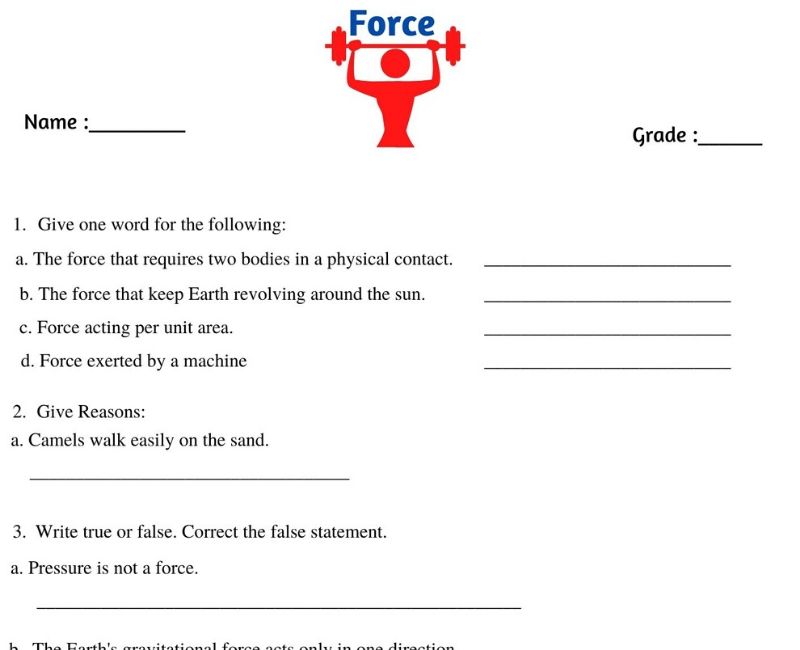Worksheet On Force: Download Now
Embarking on the fascinating world of Physics, especially when it comes to understanding the fundamental concept of force, can be a transformative journey for students. The Worksheet on Force is the golden key to unlocking this intricate domain, offering a well-structured pathway for students to dive deep into the dynamics of force and motion. This meticulously designed Force chapter worksheet isn't just a series of questions; it's a curated adventure into the realm of Physics, crafted to challenge and engage young minds in the magic and logic of the natural world.
The Force worksheet is more than a teaching tool; it's a conduit to a deeper understanding, sparking curiosity about how and why objects move or remain stationary. Each question is a stepping stone, guiding learners through the foundational principles, from the simplicity of grasping Newton's laws to unraveling the complexities of gravitational and frictional forces. This interactive journey is complemented by Physics force extra questions, a treasure trove of challenges that push students beyond conventional boundaries, encouraging them to apply concepts in varied contexts and truly master the nuts and bolts of force.
Exploration deepens with the Force chapter MCQ section, where multiple-choice questions serve as a litmus test for students' understanding, offering instant feedback on their grasp of key ideas. This segment not only solidifies their knowledge but also sharpens their critical thinking skills, as they weigh options and rationale in search of the correct answer. Moreover, the MCQ on Physics broadens their horizon, linking the principles of force to other major topics within Physics, creating a cohesive understanding of this vast subject.
In essence, the comprehensive approach embodied in the force worksheets, from detailed exercises to targeted MCQs, equips students not just for academic success but fosters a genuine passion for Physics. It transforms the abstract into the tangible, making the invisible forces that govern our universe both understandable and intriguing. For any student embarking on this scientific journey, these resources are not merely academic aids; they are beacons of enlightenment, illuminating the path to a profound appreciation of the forces that shape our world.
FAQs:
What is force?
Think of force like a push or a pull on something. When you push your toy car, it moves because you applied a force to it. Force can make things move, stop, change direction, or even change shape. It's like an invisible hand that can do all these things.
Types of forces
There are many types of invisible hands or forces. Here are some of them:
- Gravity: It's like an invisible rope that pulls things towards the ground. It's why apples fall from trees.
- Magnetism: Have you played with magnets? This force pulls them together or pushes them apart, depending on which sides you have facing each other.
- Push and Pull: When you push your toy car or pull a door to open it, you're using this force.
- Friction: This is what stops your toy car. When it slides on the floor, the floor pushes back against it, slowing it down.
- Stretch: Think about a rubber band. When you stretch it, you're applying a force. When you let go, it goes back to its original shape.
SI Unit for Force
When we talk about how strong a force is, we measure it in something called Newtons, named after Sir Isaac Newton who did a lot of work with forces. If you push something with a force of 1 Newton, it's like you're holding an apple in your hand. That's how much force the apple is pulling down with.
What force would be needed to produce an acceleration?
Imagine you want your toy car to start moving or go faster. The force you need depends on how heavy the car is and how fast you want it to go. If the car is really light, you don't need much force. If it's heavy, you'll need to push harder. And if you want it to speed up really fast, you'll have to push even harder than if you're okay with it speeding up slowly. So, it's all about the mix between how heavy something is and how quickly you want to change its speed.






